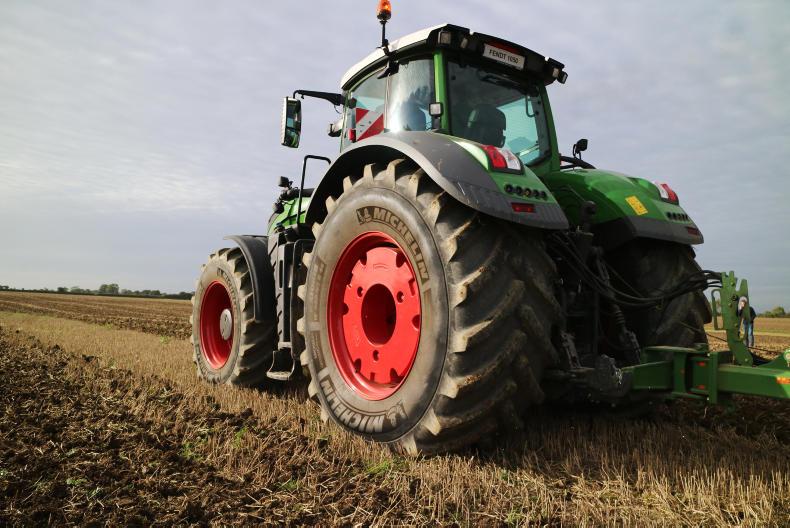The Irish Farmers Journal got to grips with what is the world’s largest conventional tractor in north Dublin.
The Fendt 1000 Vario series is the first high-horsepower tractor to be fitted with the low engine speed concept ProDrive. The engine, transmission, cooling system and hydraulics were co-ordinated with each other during the course of the design and development of the tractor. This allowed each component to be designed to suit a high torque, low engine speed principle. The aim is to maximise overall performance, while minimising fuel consumption.
The range consists of four models with horsepower outputs of 380hp to 500hp. All the models are powered by compact MAN six-cylinder engines. On the road, the 1000 series can reach a top speed of 60km/h, making light work of haulage jobs. With an unladen weight of just 14t, the tractor is equally efficient in the field carrying out tillage operations such as precision drilling and cultivating.

Maximum torque at low revs
Sean Gorman, area sales manager for Fendt, shared his excitement to be introducing the series to Ireland: “I feel the 1000 series will be a serious contender in the high-horsepower tractor market due to the extensive design and development that has gone into this machine over the past 10 years.
“Firstly, take the engines. They enable the tractor to achieve maximum torque at low revs of between 1,100rpm and 1,500rpm, which is considerably less than other tractors in this power bracket. This, in turn, results in a highly fuel-efficient machine.”
The high level of performance is aided by the concentric air/cooling system, which Fendt claims makes the 1000 Series 75% more efficient than tractors fitted with standard cooling systems.
Transmission
Transferring the power to the ground are independently driven front and rear axles, which perform without the need for any input from the operator. This ensures that maximum traction is achieved in all conditions. The tyres on this tractor are definitely a focal point. Up front are 710 60R38s, which are more commonly found on the rear axle of many 200hp tractors, while the rear tyres are enormous 900 65R46s, which had to be specially designed for the 1000 Series.

Flexible ballasting can be fitted from 14t up to 25t. This is made a much simpler process thanks to the Grip Assistant feature, where the tractor is able to calculate automatically the level of ballast required to achieve optimum overall performance.
Inside the cab
The Fendt VarioGuide self-steer system helps achieve significant savings in costs and time by avoiding over- and under-lapping. This means every inch of every field is used for maximum crop production and the tractor doesn’t use fuel unnecessarily while carrying out the work.
Fendt has sold 10 of these tractors in the UK on the back of an extensive demo tour and is confident it will have someone here in Ireland willing to pay the eye-watering €350,000 plus VAT price tag for this hugely impressive 500hp beast.
From my time behind the wheel, once you get over the initial awe of the sheer size of the tractor and bonnet peering out in front of you, then it becomes no more daunting than any other big tractor.
It is surprisingly compact at 3m wide when you consider it is sitting on 900 rear tyres. Is it a contender in the larger horsepower bracket? Yes, largely due to the fact that it is so versatile in comparison with its tracked counterparts. The 1050 wouldn’t look out of place in front of a large square baler or trailer, and it is easy to move around from field to field thanks to it being on wheels and being compact for its horsepower.
Having said all that, is there a job in Ireland that needs the 1050 as opposed to its smaller brother 939? I don’t think so, but I do think someone with heavy metal disease will be the first to say they own one here in Ireland.






 This is a subscriber-only article
This is a subscriber-only article














SHARING OPTIONS: